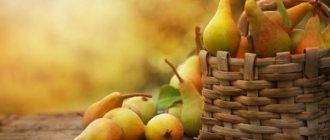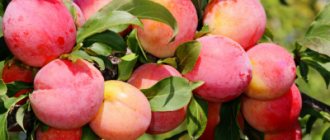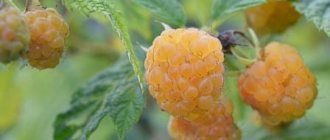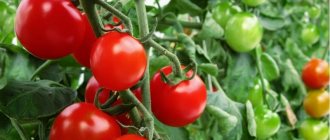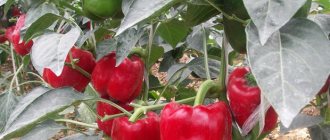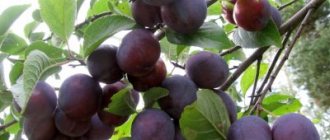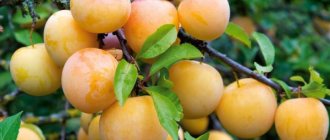Bogatyrskaya plum is one of the best varieties of crops, characterized by high productivity. With proper care, one plant can produce about 80 kg of tasty and ripe fruit per season. Frost resistance makes the variety suitable for cultivation in northern regions.
Plum variety "Bogatyrskaya"
Bogatyrskaya plum fruits have a delicate, juicy taste, with a honey flavor
The plum variety “Bogatyrskaya” is unpretentious and productive
Description of Bogatyrskaya plum
The trees are considered tall, however, this is only until the fruiting period. As soon as the plum begins to form fruits, it stops growing and is considered medium-sized.
The density of the crown is not wide with spreading branches. Around the branches located in the center, a gray bark forms, it seems as if it is peeling off. An angle appears between the branches and the trunk. The branches are pale in color with a slight curvature. The shoots of the tree are gray in color, the shoots are not thick, but strong. The kidneys are located on the islets.
The leaves of the Bogatyrskaya plum are unusual: dark green on one side, light on the other. The fruits are large, the weight of one is about 40 g. The color is purple, the shape is a long oval. A waxy layer appears on the plum. The abdominal seam is invisible. The pulp is yellow-green, dense, tender with a sweet taste. The stone is small, occupies about 9% of the total weight of the fruit.
Bogatyrskaya plum variety, description, characteristics, photos and reviews, cultivation features
The current variety of plum varieties is amazing. In the State Register they are even divided into groups: domestic, Chinese, finely serrated, splayed, three-lobed and black. The Bogatyrskaya variety is one of the domestic plums, of which almost 7 dozen are registered. However, he stands out favorably against their background.
The history of the creation of the Bogatyrskaya plum variety
The Bogatyrskaya plum was bred at the Laboratory for Breeding Fruit and Berry Crops, located in the Volgograd region and part of the State Scientific Institution of the Nizhnevolzhsky Research Institute of Agriculture. She has been specializing in creating new varieties of berries and fruits for many decades. The starting point was the Dubovsky stronghold, created in the 1930s.
Then he belonged to the Nizhnevolzhsky Research Institute of Agriculture. Since 1935, the stronghold was led by the famous domestic breeder Viktor Andreevich Korneev, and in 1960 he handed over the reins to his son. Roland Viktorovich also became a major specialist in the field of selection of fruit and berry crops.
It was under the leadership of these two scientists, among many others, that the Bogatyrskaya plum variety was developed.
A new variety of domestic plum, Bogatyrskaya, commonly referred to as Bogatyr, was obtained by crossing the varieties Ispolinskaya and Vengerka local.
In December 1961, the Federal Scientific Center for Agroecology, Integrated Land Reclamation and Protective Afforestation of the Russian Academy of Sciences submitted an application to the State Variety Commission to test a new variety of plums, which took place until 1987, when the variety was included in the State Register. The State Commission for Testing and Protection of Breeding Achievements recommended this plum for cultivation in its native Lower Volga region, which includes the Republic of Kalmykia and the Saratov, Volgograd and Astrakhan regions.
Photo gallery: Bogatyrskaya and her parents
The Bogatyrskaya plum is the result of crossing the Ispolinskaya and local Hungarian varieties. The local Hungarian plum gave the color of the berries to its “daughter.” The Ispolinskaya plum is also the parent of the Bogatyrskaya
Appearance and characteristic features of the variety
The Bogatyrskaya plum variety is a medium-sized tree that reaches a height of 4 m.
Plum Bogatyrskaya is a self-fertile and productive tree
The plant will bear its first fruits in the fourth or even fifth year after planting a one-year-old seedling in a permanent place.
The variety is self-fertile and does not require additional pollinators. The berries ripen late or very late (closer to the end of August or beginning of September). The large oval fruits (30–35 g) are dark purple in color, and when fully ripe, the thin skin becomes almost black with a bluish waxy coating.
Bogatyrskaya plums have a universal purpose; they can be consumed fresh and processed into various culinary products. They feel great during transportation. Inside they have yellow, slightly greenish flesh. It is dense and very juicy, tastes sweet with an original honey tint. The medium-sized stone separates well from the pulp.
If there is excess moisture, plums do not crack.
Oval large fruits of the Bogatyrskaya plum weigh 30–35 g
The Bogatyrskaya plum bears fruit annually and generously; at the same time, the yield of a ripening plum increases: a 5-6 year old specimen can produce a harvest of 60 kg, and in adulthood - up to 80 kg.
Plums of this variety are resistant to diseases and various pests that usually attack these trees, however, wet and cold summers can provoke fungal diseases. In addition, Bogatyrskaya’s winter hardiness is above average, so it does not require shelter for the winter. The typical lifespan of a tree of this variety is from 15 to 30 years.
Features of growing Bogatyrskaya plum
Basically, the method and conditions of planting, the agricultural technology for growing Bogatyrskaya plum are no different from other varieties of this type of plant.
Harvest rationing
The self-fertility of the variety allows you to do without planting pollinator varieties. The presence of such trees will lead to an additional increase in the yield of Bogatyrskaya, which is already high.
Just one of the disadvantages of this variety of plum is the tendency to overload the branches growing at an acute angle in relation to the trunk with the crop, which is why they break. In this regard, crown formation is required.
Experienced gardeners also recommend regulating the load on the tree by cutting off half of the ovaries in 2 steps:
- about a quarter of the ovaries are removed when they reach the size of a hazelnut;
- The second quarter of the greenfinches is removed when they become twice their size.
Tree crown formation
Proper pruning plays a very important role in the life of the Bogatyrskaya plum tree. To solve the problem of fragility of branches growing at an acute angle, it is recommended to remove them, leaving only stable shoots located at a large angle relative to the trunk.
Spring pruning of the Bogatyrskaya plum allows not only to normalize and preserve the harvest, but also protects the tree from injuries, diseases, and pest damage
https://www.youtube.com/watch?v=YXBndA4EybA
The most suitable option for the Bogatyrskaya plum is considered to be an improved tiered crown form, which is created gradually in the first years of the tree’s growth on the site:
- After planting the seedling, the first pruning is carried out in the spring of next year. The main conductor is left on the tree, which is not cut, and a maximum of 3 side branches, the most developed and ideally extending from the trunk at angles of 45° or more. There should be about 15–20 cm between the side branches along the trunk. The remaining shoots are completely removed, in no case leaving stumps.
- In the spring of the third year, in a similar way, at a distance of up to 90 cm, a second tier is formed, consisting of 2 branches, above which the main conductor rises by at least a quarter of a meter.
- Next spring, a third tier is made, also consisting of 2 branches located half a meter above the second tier.
- In subsequent years, every spring, branches directed vertically upward, downward or into the crown are removed.
When and how to prune a mature tree
Spring pruning is usually carried out at the end of March or beginning of April, when the air temperature is kept at +10°C for at least a week. At the same time, frozen and diseased branches are cut out, as well as those that thicken the crown and intersect.
In summer, the Bogatyrskaya plum is pruned only if the branch is affected by disease or pests, which sometimes happens under unfavorable conditions, despite the variety’s resistance to these factors.
Plum branches with signs of disease are removed
Some gardeners carry out pruning in October or even early November, but most professionals agree that it greatly weakens the tree, since it needs at least 2 months to recover from such an operation.
This is especially significant for areas in the middle zone and more northern regions, but even for southern territories such pruning is undesirable, given possible weather surprises.
In the fall, only sanitary pruning is done, removing diseased, dry or damaged branches.
Characteristics of the variety
Bogatyrskaya plum is a short tree, reaching a maximum of 4 m. It is very popular among gardeners due to its tasty fruits and ease of care.
Frost resistance and drought resistance
The tree can withstand a slight drought, but without watering it will die. It tolerates frosts and cold winds easily and does not need special shelters for the winter. Due to its high cold resistance, plums are planted and grown in the northern regions.
Pollinators of plum Bogatyrskaya
The main advantage of the plant is that the variety is self-pollinating and has both female and male flowers. It is not necessary to plant other varieties next to plums. But their presence will increase the yield of all plums growing on the site. The plant begins to bloom at the end of spring, the fruits form and ripen late, and ripen in late summer.
Productivity and fruiting
The harvest is good, fruiting is almost annual. The number of fruits increases with plant growth. A young seedling will produce about 50 kg of fruit in 1 season, and a mature tree will produce about 85 kg. The fruits appear 5 years after direct planting in open soil. The tree bears fruit for about 25 years, it all depends on caring for the plant.
Area of use of berries
Fresh fruits are tasty and juicy, they contain a large number of useful microelements that the body needs. The berries are canned and used to make jam, jam, juices and compotes. In the spring season, an excellent tincture is obtained.
Harvesting
The berries begin to ripen in mid-August. Bogatyrskaya is famous for its harvests. A five-year-old tree produces 50–70 kg of fruit, a more mature tree produces 80 kg. Plums ripen gradually and are harvested within a month.
Dry, strong fruits are placed in boxes in 3-4 layers and stored in the refrigerator. At a temperature of +5°C they do not spoil for 2–3 weeks. The berries are frozen, dried or processed: jam, compotes, marmalade are made, juices and homemade wine are made.
Plum is very healthy, contains many trace elements, and is easy to digest. It is recommended for liver diseases and intestinal atony. Thanks to the presence of potassium, it helps strengthen blood vessels. Plum cleanses the blood and removes toxins from the body. It is also used as a cosmetic product. By mixing the pulp with sour cream, you can prepare a mask that rejuvenates the skin of the face and gives it elasticity.
The fruits of the Bogatyrskaya plum are sweet and sour with a honey aroma
Advantages and disadvantages of the variety
Pros of plum:
- large fruits of excellent taste;
- strong immunity to many diseases;
- the crop does not crack in wet weather;
- excellent frost and drought resistance;
- high productivity;
- excellent transportability;
- self-pollinating.
The main disadvantage of this variety is that the plum produces a large harvest, so the branches cannot stand it and break, and over time the fruits become smaller.
Aftercare
The variety needs the most minimal attention.
Watering mode
The Bogatyrskaya plum is irrigated regularly, but in moderation, taking into account the weather. Overwatering leads to yellowing of the foliage. In the first year, the seedling is watered weekly. 10 liters of water are poured into the tree trunk circle.
Seedlings from 2 to 4 years old need 20–30 liters of liquid every three weeks.
Mature trees are given 40–50 liters 4 times per season:
- before flowering;
- after him;
- 3 weeks before plum harvesting;
- the last time in early October in the absence of rain.
See also
Description and characteristics of cherry plum variety Naydena, cultivation technology
Read
Water by sprinkling or use grooves along the projection of the crown. Then they loosen the soil. A similar procedure is performed after each rain.
How to feed a fruit tree
The young plant needs enough fertilizer applied during planting. Starting from the 2nd year of life, additional feeding is necessary.
Fertilizers are applied, each taken in the amount of 60 g:
- before flowers appear - urea;
- after the flowers fall off - nitrophoska;
- end of June - urea (foliar feeding);
- early August - superphosphate and potassium sulfate.
Every year the trees are fertilized with organic matter. Possible means: 15 kg of humus (compost), 10 kg of cow manure or chicken droppings. Mature plants are fertilized with organic fertilizers every 2–3 years.
Crown formation
Timely and correct pruning of a tree is a guarantee of good fruiting, increased productivity and freedom from diseases.
The first procedure is carried out when planting a plum. The trunk is cut to a third of its height. Under this condition, crown formation will accelerate.
Pruning is carried out annually in the spring. Shoots damaged during the winter are removed. With a small increase in shoots, the branch is cut down to wood. Sprouts that are strongly bent above the ground are removed. The volume of cut cuttings should not exceed a quarter of the total number of branches.
Loosening and mulching the tree trunk circle
After each irrigation, the soil is compacted. In order for the roots to grow, breathe and feed, the tree trunk circle is loosened, and after each watering.
Mulching will perform the following functions:
- will reduce liquid evaporation;
- protects roots from frost and temperature changes;
- will slow down the growth of weeds;
- will improve the structure of the soil, since mulch is a fertilizer;
- activates the activity of beneficial microorganisms.
Peat, humus, pine needles, sawdust, straw, grass, and film are used as mulch for plums.
Seasonal preventive treatments
Bogatyr plum is resistant to diseases and pests. But for the purpose of prevention, seasonal spraying is carried out. 1% Bordeaux mixture is used. The first treatment is before the buds swell. Then at the beginning of flowering, then 2 weeks after flowering. Additionally sprayed after harvesting.
Planting and care
Since the plant is self-pollinating, it does not need additional plum varieties, so the gardener can devote time to only one Bogatyrskaya plum.
We recommend reading our article on how to plant and grow plum trees.
Landing dates
This plum variety can be planted both in spring and autumn. But it is better to plant the plant in the spring; over the summer, the root system of the variety will take root and get used to the new environment and soil. In the southern regions, you can plant a tree in the autumn period of the year. The area for planting is prepared in advance - 14 days.
For planting, dig a hole to a depth of 0.6 m and a width of 0.8 m. The distance between trees of the same variety should be at least 4 m. Add to the top layer of soil:
- 1 bucket of peat;
- 1 bucket of humus;
- 0.5 kg of superphosphate;
- 45 g potassium sulfate;
- ash.
If the soil is very acidic, then lime is added to it at the rate of 0.5 kg per 1 sq. m. m. Egg shells and nutrient mixture are placed in the recess.
Selecting a location
In a temperate climate zone, it is better to plant the plant on the south or southeast side of the garden plot. The area should be well lit, especially in the morning. The best option is to plant the plant on a small sunny hill. Roots should not touch groundwater, and wetlands are not allowed.
Seedlings must be protected from cold and wind. They are planted next to fences: fences, outbuildings, etc.
The Bogatyrskaya plum has medium-spreading branches so that they do not intertwine, and the trees are not planted too close to each other. The soil needs loamy or sandy loam. If the area is clayey, then river sand is added to it.
Plum does not develop well in soils with high acidity; it should be neutral.
What crops can and cannot be planted nearby?
Walnut trees are bad neighbors. Especially walnut and hazel. Linden, poplar and birch should not be planted next to plum trees. An apple tree and a pear tree are not particularly favorable neighbors, but with proper care the plants can get along. The main thing is not to plant them too close to each other.
Plant black currants next to the crop; it will contribute to a large plum harvest. There should be a distance of at least 3 m between the currant and the tree.
Selection and preparation of planting material
To plant a tree, choose an annual seedling. By this age, the root lobe is fully developed. The part of the plant located above the ground is a small twig grafted onto the rootstock.
The root system can be closed or open; if it is open, then the plant is soaked in a solution of potassium permanganate or “Kornevin”. This action will disinfect the seedling, protect it from diseases and pests, and also speed up its establishment in the soil.
Plants purchased in pots are taken out and their roots are examined; if everything is in order with them, then they are planted in the soil.
Planting scheme
Algorithm for planting in open ground:
- Fertilize the soil in the fall and dig in the spring.
- Apply fertilizer to the hole.
- Place a seedling on a hill of soil and straighten its root system.
- Position the tree so that its root collar is 4-6 cm above the soil.
- Do not confuse the root collar with the grafting site, which is located above it.
- Moisten the root system with water, cover it with soil, compact it a little and water it. You will need about one bucket of water.
- Place mulch around the root circle to prevent the root system from drying out. This method will eliminate the appearance of weeds and the formation of a dry soil layer.
Features of planting a hero tree
The process of preparing for planting begins long before the actual planting of the seedling and includes the following stages:
- selection and preparation of the optimal garden plot;
- procurement of high-quality planting material;
- its pre-planting treatment;
- planting a seedling.
Recommended timing
The planting pit begins to be prepared in the fall if the planting of seedlings is scheduled for spring, and vice versa if autumn planting is planned. Most gardeners tend to believe that the most optimal time is to plant seedlings in April before the buds open. If you purchase plum seedlings in the fall, they can be preserved until spring by placing them in a trench and covering them with spruce branches. However, it is permissible to plant plums in the autumn, then agrotechnical procedures are carried out until mid-October.
Choosing a suitable location
At the planning stage of planting a plum orchard, you should pay attention to the following areas:
- with groundwater occurring at a depth of 1.5 m or more. A closer presence of moisture can lead to its stagnation in the soil, complicating aeration and air access to the roots of the plant;
- slopes, flat areas, as well as small hills that are well lit by the sun;
- hidden from the wind or located close to fences, which can partially act as protection from drafts and strong air currents.
Selection and preparation of planting material
Suitable seedlings for planting must be:
- annual or biennial;
- seedling growth is 1–1.4 m and the standard size is 40–60 cm;
- have a developed rhizome, the size of which should reach 25–30 cm;
- have 3 or more main processes 15–30 cm long;
- the bark should be flexible, without rot and dry shoots.
It is recommended to purchase planting material from trusted suppliers who care about the quality of seedlings and follow the rules for their procurement and processing. After purchasing seedlings, their rhizomes are wrapped in a wet cloth to prevent them from drying out, and if the purchase of planting material was made long before planting, then it is recommended to bury the rhizomes.
Soaking the roots of seedlings in a clay mash Before planting, the seedling must be treated. To do this, it is immersed by a third in a weak solution of potassium permanganate, after which the roots are treated with a mixture of clay and manure, taken in a 2:1 ratio. After lubricating the roots, they are left to dry for several hours, then the seedling is ready for planting.
Direct drop off
Preparation of the planting pit begins in advance:
- To begin with, mark the diameter, the value of which should be 80–100 cm.
- Next, you need to remove the top layer of soil 20 cm thick.
- Dig a hole 50–60 cm deep.
- Mix the excavated soil with superphosphate, potassium salt, humus and compost. If the soil is clayey, river sand is added to it, and if it is sandy, powdered clay is added.
- An earthen cushion with fertilizers is placed in the planting hole in the form of a hill.
- Cover the hole with waterproof film.
Planting takes place using the following technology:
- Preparation of the planting pit, which is described in detail above.
- Installing a support peg about 150–170 cm high, which will support the growing tree in the early years. It is dug in at a distance of 15–20 cm from the center of the hole.
- A seedling is placed on a prepared earthen hill inside the hole, carefully straightening the roots. After which the rhizome of the tree is sprinkled with soil so that the root collar is 3–5 cm above ground level.
- The earth must be compacted and, stepping back about 30 cm from the trunk, dig a shallow, about 10 cm hole in a circle. 40–50 liters of water are poured into this depression for irrigation immediately after planting.
- The tree trunk circle is covered with nutrients and mulched; organic peat and humus can be used.
- The tree is fixed to the peg using soft twine.
Video: planting a plum seedling
Further care of the plum after planting
Regular care will help the gardener grow a healthy plant and get a rich harvest.
Watering and loosening the soil
Caring for a seedling always begins with treating the root trunk. The soil is loosened immediately after adding water, the grass is destroyed, which takes away useful elements from the tree.
After loosening, pour 1 bucket of humus under the plant.
The tree loves water, but too much of it has a negative effect: the foliage turns yellow and the fruit does not set. Seedlings should be watered once a week, 3 buckets each. Mature trees need 4 buckets of water (applied 6 times in 1 season). If the plum tree does not have enough watering, the fruits fall off, do not ripen, and the ovaries crumble.
Before the first frost, a lot of water is added under the plant - this is a moisture charge.
Tree feeding
Fertilizers are not applied immediately after planting (they were sufficiently used during the preparation of the site for the seedling). In the 1st year, the plum is sprayed with growth stimulants once every 7-12 days.
A tree that has begun to bear fruit is fed 3 times in 1 season:
- Urea (90 g per 2 liters of water) - before flowering.
- Nitrophoska (60 g per 2 liters of water) - during fruit ripening.
- Superphosphate (60 g per 20 liters of water) - after picking fruit.
In autumn, the tree needs to be fed with rotted manure (1 bucket per 1 plant).
Fertilizers are applied every year. As soon as the plant reaches 15 years, the amount of organic fertilizer is doubled. In the autumn, nitrogen is not used, since this chemical element promotes the development of the green mass of the tree, and in the fall it must prepare for “hibernation”.
Before and after flowering, you can feed the plum with organic matter: chicken droppings or mullein 20 kg.
Apply 2 kg of ash per plant; acidic soils need lime or dolomite flour. The plant reacts very sharply to the absence or shortage of useful microelements:
- If the plum lacks potassium, the leaves turn yellow. You can help in this way: the crown is irrigated with ammonium nitrate (20 g) and urea (50 g).
- If a tree lacks magnesium, the edges of the leaves curl and the veins darken. You can save it by adding magnesium and potassium to the soil (30 g per 1 sq. m).
Trimming
Forming the crown of a tree is an important part of care. The event is held at the end of March or beginning of April. It all depends on the air temperature, it should be at least +10 degrees Celsius.
Plum branches are overloaded with fruit, so only those branches that grow at an angle are saved - they are the strongest. The best form for the plant is tiered.
Trimming scheme:
- The next year after planting, leave 4 strong shoots: the center and 3 side branches. Cut others down to the level of the ring bead.
- Leave the shoots at an angle. They should be placed at a distance of 0.2 m from each other.
- In the 3rd year, form a 2nd tier from 2 branches at a distance of 0.7 m from the 1st. The central conductor should be 0.2 m longer than the others.
- After 1 year, start creating the 3rd tier. It consists of 2 branches placed at a distance of 0.5 m from the 2nd row.
- Subsequent pruning is aimed at removing branches that grow vertically or thicken the tree.
If annual growths grow up to 0.4 m, then they cannot be cut; if the size is more than 0.5 m, then the branch is shortened by a quarter.
Summer residents also recommend shaping branches in the fall - this is done to reduce diseased and weak branches. Some gardeners do not agree with the advice because they believe that pruning in the fall leads to damage to the trunk in winter.
Mature trees need rejuvenating crown formation - thickening and inward-directed branches are destroyed. In this case, the conductor cannot be touched.
Harvesting, storage and processing
Fruits begin to be collected 5 days before they are fully ripe. This is done so that the fruits can be safely transferred without damaging the appearance. The harvest is quickly removed from the branches; gardeners often use mechanical harvesting of the fruit.
It is impossible to store fruits for a long time; they will last no more than 2 days in the refrigerator.
The harvest is used to make jam, jam, juices, compotes and much more. Plum liqueur is especially tasty.
Preparing for winter
Scientists classify this plum variety as frost-resistant, but some tricks will help the plant survive the cold more comfortably.
Algorithm for preparing Bogatyrskaya plum for winter:
- In the fall, clear the tree trunk area of leaves and debris. Burn everything to destroy spores and larvae of diseases and pests.
- Carry out moisture-recharging irrigation, dig up the soil and add mulch. Read about soil mulching here.
- Remove dead bark from the surface of the trunk, and do the same with moss and lichens. Wash the diseased areas with a solution of iron sulfate (40 g per 2 liters of water), treat the tree with garden varnish.
- Cover the trunk and branches with a lime composition (6 kg of lime and 4 kg of clay per 20 liters of water).
- Rake the soil around the plum trunk, its height is 0.2 m.
- Treat the plant with spruce branches, it protects the tree from mice and hares.
Harvesting, processing and storage
They begin to harvest plums when they are not yet fully ripe, 6 days before full ripeness. In this case, they can be transported and not be damaged during removal. The fruits are easily removed from the tree. Mechanical harvesting of the Bogatyrsky plum variety is possible.
Important! Plum fruits cannot be stored fresh for a long time. Maximum of a couple of weeks in the refrigerator.
At home, plums are used to make jam and compotes. In the food industry, this berry is used in canned form, and alcoholic drinks are made from it.
Diseases and pests, methods of control and prevention
Bogatyrskaya plum has strong immunity, but the plant has a chance of getting sick. The gardener must know the most dangerous plum diseases and methods of combating them.
| Diseases/pests | Symptoms | Prevention |
| Hole spot | Holes appear on the foliage and fruit. The disease is fungal and quickly damages the tree during rains. | Burn fallen leaves. |
| Gum treatment | Gum appears on branches and cracks. The branches dry out, the leaves fall off. | Avoid mechanical damage to the plant. |
| Coccomycosis | Harmful to foliage and fruits. They become stained and dry out. | Plant only disease-resistant varieties on your site. |
| Fruit rot | Gray spots appear on the fruits. It is spread by the wind to other plants. | Destroy all affected fruit. |
| Sooty fungus | A black coating appears on the leaves. | Moisten the soil and trim the tree on time |
| Gray rot | The leaves look like they've been set on fire. | Cut off the branches and burn them. |
| Marsupial disease | The tree grows, but remains empty inside. | Cut off diseased branches. |
| Rust | A characteristic coating appears on the leaves. | Collect the leaves and burn them. |
| hawthorn | The pest eats the green mass of the tree. | Removing caterpillars. |
| Plum aphid | Damages leaves and shoots. | Destroy the larvae. |
| Yellow plum sawfly | They eat plum fruits. | Before the plant blooms, spray the tree with special products. |
Description and characteristics of the Chinese plum variety Red Ball
There were times when not every owner of a personal plot planted plum trees on it, because they did not winter well, and the fruits either did not set or spoiled. However, today, thanks to the work of scientists, plums are found in every third garden. Chinese varieties are also gaining popularity, among which we can separately note a variety called Red Ball. Its characteristics and cultivation rules are discussed further in the article.
Description of the Red Ball variety
This plum was bred in Moscow in 1987 by crossing trees of the Ussuri Red and Burbank varieties. This variety differs from others, first of all, in the appearance of trees and leaves, the nature of flowering and the timing of ripening.
Description of trees
Like any Chinese variety, Red Ball trees are much shorter than ordinary plum trees. Its trunk reaches 0.5 m in height, and then there is a powerful, wide, not very dense crown with a rounded shape. The height of the Red Ball rarely exceeds 2.5 m, which is very convenient for harvesting. The crown actively grows new, so-called bouquet branches every year. The ovary is formed on them. The branches are covered with dull, green leaves, divided along a thick vein that folds the leaf in half. The edges of the sheet look like a smaller copy of saw teeth. The root system is located in a horizontal plane at a depth of 40 cm, but individual roots go deep to 8 m to obtain moisture. The tree looks very beautiful during flowering - it is covered with pink or white flowers, of which there are so many that the branches are not visible. This makes Red Ball stand out among other varieties. And only after flowering ends, leaves appear on the tree.
Description of fruits
The variety got its name for a reason - its fruits really look like a ball thanks to the almost imperceptible side constriction. They are quite large and weigh on average 40 g. The outside of the fruit is covered with red skin with a waxy coating and from a distance it appears pink. The flesh inside is yellow-green, dense and fibrous. Red Ball is no different in its high water content and belongs to varieties with medium juiciness. The bone is small and difficult to separate. Plums taste sweet, with a slight pleasant sourness. They have a bright aroma.
Characteristics of the variety
Before planting this “Chinese” in your garden, you need to familiarize yourself with the characteristics of the variety in order to understand whether it can take root on your site.
Resistance to diseases and pests
The Red Ball is not sensitive to such a common disease as clasterosporiasis, but it can be affected by other fungal and bacterial diseases, as well as pests. Commonly encountered ones include fruit rot, rust, and moniliosis. As for pests, trees of this variety are attacked by plum aphids, plum weevils, slimy and plum sawflies.
Drought resistance and winter hardiness
Breeders managed to make this variety resistant to frost. It can easily withstand temperatures down to -35°C. However, this does not mean good winter hardiness, since in areas with unstable winters, when changes from frost to thaw often occur, the root collar of the Red Ball becomes damp and the tree dies. Chinese plums need enough moisture. If you don’t water it during a drought, the fruits will not gain their weight and will fall off.
Pollination
Despite the self-pollinating nature of the Red Ball declared by breeders, one cannot count on this. To be sure to get a good harvest, it is planted near a hybrid cherry plum or other Chinese plum. An ordinary home plum will not work as a pollinator.
Flowering and ripening times
Flowers appear on the tree earlier than others, by 2 weeks, due to which the fruits ripen earlier. You can enjoy them already in mid-August.
Productivity
The good thing about the red ball is that the planted tree bears fruit already in the third year, and the harvest is always stable. During the first 2 years, you can collect about 8 kg of large fruits from one tree, and up to 20 kg of plums from an adult, but provided that the summer is not rainy.
Transportability
Due to their dense structure and low water content, the fruits tolerate long-distance transportation well and do not wrinkle or crack.
Reviews from gardeners about the Bogatyrskaya plum
★★★★★
Anna, 55 years old, cook, Izhevsk. I planted the Bogatyrskaya plum variety only a year ago.
The tree has grown 1 m, but nothing is clear yet. I hope the plum will be fruitful. ★★★★★
Olya, 34 years old, teacher, Moscow. I love plums very much, I like the color of the fruit, the taste, the aroma.
My mother grows the Bogatyrskaya variety at her dacha. The fruits grow large, ripen quickly, and the aroma spreads throughout the garden. ★★★★★
Oleg, 44 years old, turner, Kiev. I planted this plum variety 3 years ago.
It grows relatively quickly, aphids appeared on it last year, I saved the tree, but now I adhere to all preventive measures without exception. The tree has not yet borne fruit, but I hope that in the near future I will be able to enjoy it. Hide
Add your review
Bogatyrskaya plum is a frost-resistant variety. The harvest is good, the fruits have excellent taste and universal use. High productivity can be achieved only if the rules for planting a tree and caring for it are followed.
0
0
Copy link
Description and characteristics of Smolinka plum
The trees grow quite tall, up to 5–5.5 m. The medium-dense or sparse crown has an oval shape (according to VSTISP) or round-pyramidal (as described in the State Register). The bark on the trunk is rough and brown. Shoots with medium internodes, they have a slight bend. Shoot growth ends at the end of June, the growing season begins at the beginning of October. Two flowers are formed in one fruit bud.
The fruits are large (30–35 g), equilateral, with a weakly defined ventral suture, and have an attractive appearance. The shape is oval-ovoid or round-oval. The medium-dense skin is dark purple in color and has a rich waxy coating of a bluish tint. The stalk is not very firmly attached to the fruit.
Large dark purple Smolinka plum fruits look attractive
The pulp is not very dense, tender. The color of the pulp and cavity is yellow with a greenish tint. The taste is very good, dessert, sweet with a slight acidity, the sources contain information about a tasting score of 4.8 points. Sugar content - 11.82%, sugar acid index - 15.2. The bone is small, semi-free. The variety is considered a table variety; the fruits are most often consumed fresh, but they can also be processed into canned products, dried and frozen.
The greenish-yellow pulp of the Smolinka plum has a medium-dense, delicate consistency.
Plums ripen in the second half of August. The early fruiting rate is not very high; fruiting begins 4–5 years after planting. Productivity is average: according to VSTISP, up to 40 kg of fruits are harvested from one tree; VNIISPK characterizes productivity with another unit of measurement - 4 kg/m2 of crown projection. There is a vaguely expressed periodicity of fruiting; productive years can alternate with seasons of “rest” of plants. The variety is self-sterile.
The plants are not winter-hardy or drought-resistant; these characteristics are at an average level. There is relative immunity to clasterosporiasis.
The most significant advantages of the variety include:
- large fruit;
- commercial appearance of plums;
- very good dessert taste;
- versatility of fruit use;
- high quality processed products;
- relative resistance to clasterosporium blight.
Smolinka also has a number of disadvantages:
- tallness;
- self-sterility;
- average level of winter hardiness;
- insufficient drought resistance;
- irregular fruiting.
Description of the variety
Bogatyrskaya plum is especially common in the Volgograd region of Russia; the variety was bred at the Nizhne-Volzhsky Scientific Research Institute of Agriculture. This is a medium-sized tree up to 3 meters tall. The crown is round, raised, spreading, and of medium density. The bark of the tree is light gray and slightly flaky. The branches are crooked and grow at an acute angle to the trunk. The shoots are strong, light brown in color. The buds grow on them at an angle of 45°, are of medium size, brown and conical in shape. The leaves are small, dark green on top and lighter on the back, pointed towards the base, with jagged edges and a small edge.
By the way, this variety of plum is otherwise called Bogatyr.
An adult Bogatyrskaya plum tree is very productive; the branches need support under the weight of the harvest.
The Bogatyrskaya plum blooms in early May with medium-sized white flowers, which are located on the tree in small inflorescences of 2-3 pieces. The harvest ripens in August, usually towards the end, but unevenly, so plums are harvested from the second ten days of the month. The tree bears fruit starting 4–5 years after planting, and within a few years reaches its maximum yield. For an adult tree this is about 60–80 kg . The plum bears fruit consistently every year and lives up to 30 years.
The fruits of the Bogatyrskaya plum sometimes reach 70 g
The fruits of Bogatyrskaya are large, 30–35 g each. Ripe plums acquire a dark, black-violet hue, and are covered with a noticeable blue coating on top. The fruits are oval in shape with a rounded top and a slightly elongated base.
The plum pulp is juicy, tender, dense in consistency, yellowish-green in color. The taste is sweet with a slight sourness and honey aroma.
Description of the variety
The medium-ripening domestic plum Bogatyrskaya was bred at the Dubovsky stronghold of the Nizhnevolzhsky Research Institute of Agriculture. Sometimes this plum is called Bogatyr.
The tree is of medium height and has a spreading, medium-dense crown. The color of the trunk bark, main twigs and branches is gray, the texture is flaky. Strong gray-brown shoots of medium thickness. The leaves on a long petiole are dark green on top and light green below, their surface is slightly corrugated.
At the time of fruiting, the plum branches are literally covered with fruits
The plum blossom period is average - in the first half of May. Quite large (30–40 g), elongated oval fruits of a dark purple color are covered with a waxy coating. The greenish-yellow flesh is juicy and tender, but slightly gristly, with a sweet and sour taste. The medium-sized oval-shaped stone does not separate from the pulp very well. The sugar content of plums is quite high.
The lifespan of a tree depends on the rootstock and can be 15–30 years.
